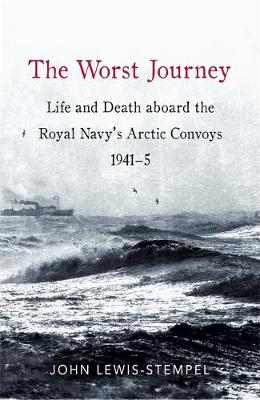During the terrible voyage, from the extreme north-west of Scotland to Russia's Arctic coast, the sailors faced 50- and even 100-foot waves, icebergs and hurricane-force winds. Such winds could peel the steel shields from the ships' guns and regularly blew men overboard. In summer, Oerlikon gunners would be at their guns for twenty hours a day; in the winter they often froze to death.
Even when the convoys reached Murmansk or Archangel there was no respite. Murmansk was about 25 miles from the front, which meant that there were enemy raids all day and food was short.
Despite all this the Royal Navy stuck to the convoys for four years, supplying Russia with planes, oil and other vital material, but, more importantly, by reassuring Stalin of Britain's commitment, the men of the Arctic convoys succeeded in keeping Russia in the war.
This is a book about the men of the convoys, about life aboard ship, drawing extensively on letters, diaries and reports, many from previously unpublished archives, as well as new interviews with the last surviving veterans.
The Worst Journey shadows the experience of the sailors on the seventy-eight Arctic convoys: from enlistment, through training, joining a ship, shore leave, action and death - or survival - at sea. It follows the fortunes of twenty-five sailors drawn from the bottom, middle and top of the navy's ranks. A sailor's position aboard ship played a critical role in whether he survived an attack or sinking, depending on where the ship was hit, or holed.
- ISBN10 1472137930
- ISBN13 9781472137937
- Publish Date 25 December 2034 (first published 29 March 2018)
- Publish Status Forthcoming
- Publish Country GB
- Publisher Little, Brown Book Group
- Imprint Robinson
- Format Hardcover
- Pages 288
- Language English
